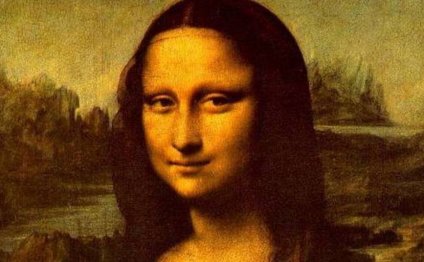
List of Renaissance Paintings
The Early Italian Renaissance art refers to an artistic movement that started in Florence and other rich north Italian cities in the early 15th century and marked the beginning of a major cultural change in Europe. The Early Italian Renaissance artists began to show an increased interest in the beauty of the nature and human body as portrayed in classical antiquity. But they did not break with Gothic art completely. They did, however, set the stage for the widespread of the Renaissance movement in the late 15th century that ended the transition from the "dark and backward" Middle Ages to the Early Modern Period.
Gates of Paradise by Lorenzo Ghiberti
Lorenzo Ghiberti’s Gates of Paradise are a set of bronze doors that were made for the Florence Baptistery and took the celebrated Italian artist 27 years to complete. The doors that depict Old Testament scenes on 10 panels were finally installed in 1452 and profoundly influenced his contemporaries as well as the next generation of Italian Renaissance artists. The Gates of Paradise that are today admired in the Baptistery, however, are a copy. The original Ghiberti’s doors are held in the Museo dell’Opera del Duomo that is located just a few steps from the Baptistery.
Procession of the Magi by Benozzo Gozzoli
The Procession of the Magi, a series of frescoes that were created by Benozzo Gozzoli between 1459 and 1461 are considered the artist’s greatest masterpieces. The frescoes cover three walls of the Magi Chapel in the Palazzo Medici Riccardi of Florence, each depicting one of the three kings bringing gifts to baby Jesus. The procession starts on the east wall with the youngest king, continues on the south wall with the middle king and ends on the west wall with the oldest king. The procession of the youngest king with retinue also includes portraits of the Medici family and artist’s self-portrait.
Expulsion from the Garden of Eden by Masaccio
Like its title suggests, the fresco depicts the expulsion of Adam and Eve from the garden of Eden. It was created ca. 1425 and is a part of a larger fresco cycle in the Branacci Chapel of Santa Maria del Carmine in Florence that also includes frescoes by Masolino. Masaccio’s fresco, however, reveals a striking difference from Masolino’s late Gothic depiction of Adam and Eve on the opposite wall of the Brancacci Chapel. Unlike expressionless and static Masacio’s portrayal, Masaccio’s Adam and Eve reveal a great deal of emotion, while the Eve’s style of covering her naked body is nearly identical to the statues of the ancient Greek goddess of love Aphrodite (Venus Pudica). This suggests that the artist was probably inspired by classical antiquity.
David by Donatello
Donatello’s bronze David, created ca. 1435-1440 for Cosimo il Vecchio de’ Medici was the first life-size nude statue since antiquity. It depicts Biblical David wearing only a hat and boots, with his foot resting on the head of the defeated Goliath. But the statue that has almost a feminine form also represents the ideal beauty of a male body. Donatello’s David was originally located in the courtyard of the Medici Palace in Florence but it was moved several times until the 1860s when it was placed to the Bargello museum where it remained until the present-day.
The Annunciation by Fra Angelico
While the central themes of Fra Angelico’s artworks are conservative, his technique reveals that he followed the latest artistic trends of his time. The monk-painter’s Annunciation is the finest example of his brilliance which justifies his reputation as one of the finest Early Italian Renaissance artists. The fresco that tells the story of Virgin Mary being announced that she is pregnant by the angel Gabriel reveals an outstanding depth and sense for newly discovered central perspective. But at the same time, it also reveals a strive for simplicity, humility and chastity which corresponds with the rules of his Dominican order. The fresco was painted between 1438 and 1445, and can be admired in the San Marco convent (today a museum) in Florence.
YOU MIGHT ALSO LIKE



Share this Post
Related posts
Famous Renaissance paintings
Sometimes, when the light hits their chiseled features just the right way, it’s easy to see how certain celebrities could…
Read MoreMost famous Renaissance paintings
Raphael Sanzio was born in 1483 in the province of Umbria and received provincial training in the workshop of Pietro Perugino…
Read More





